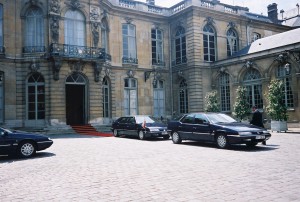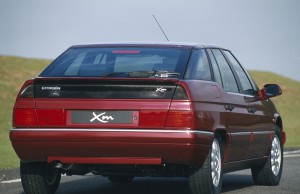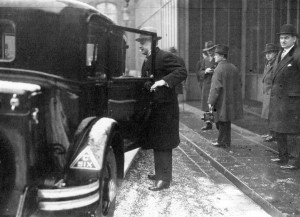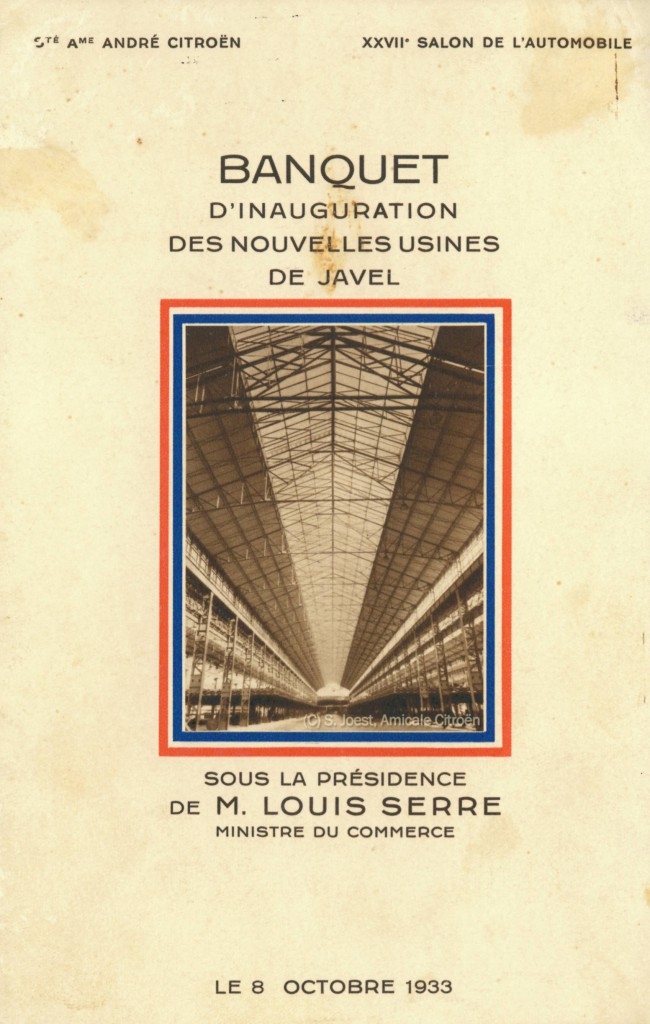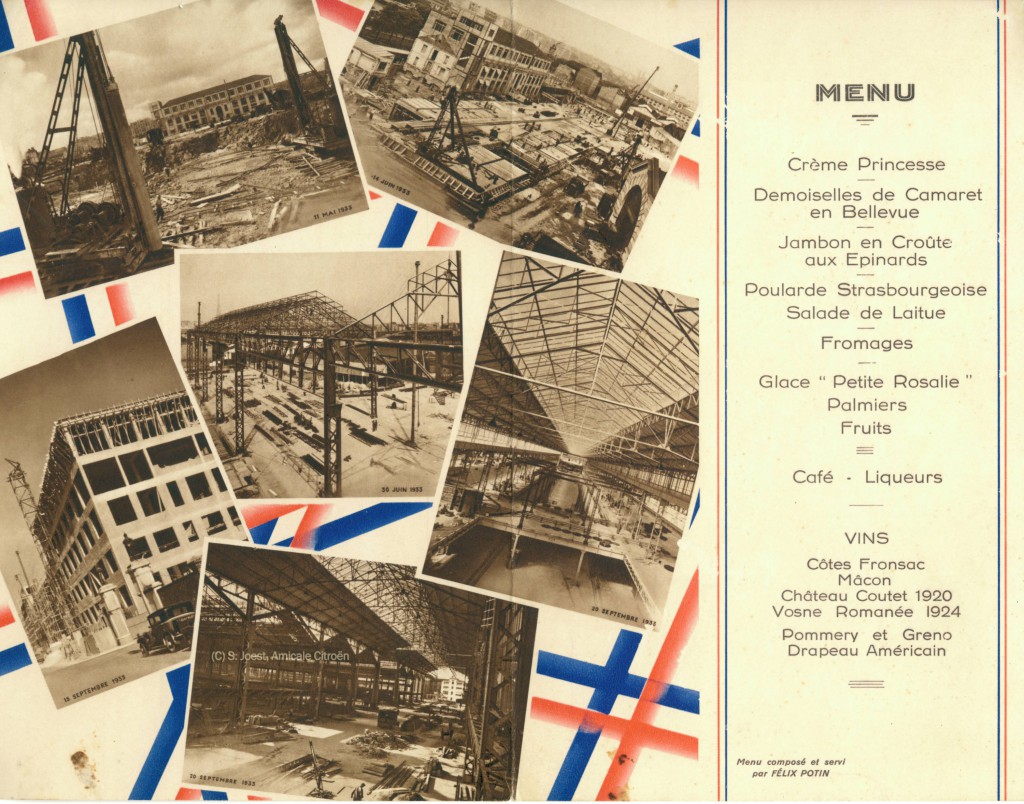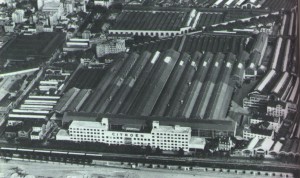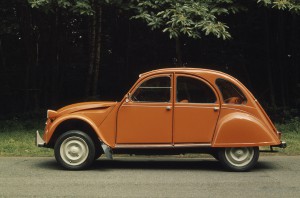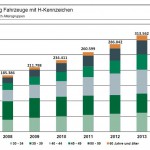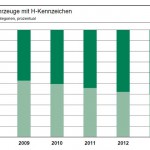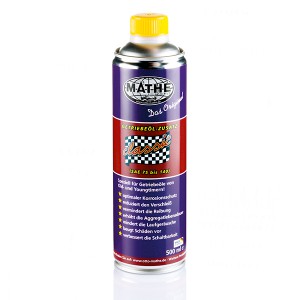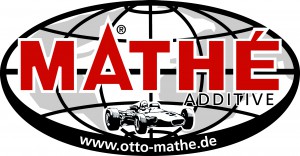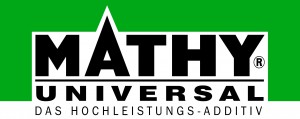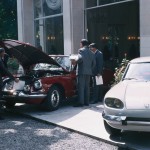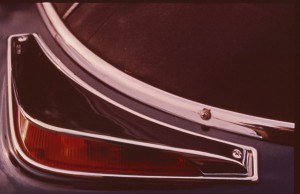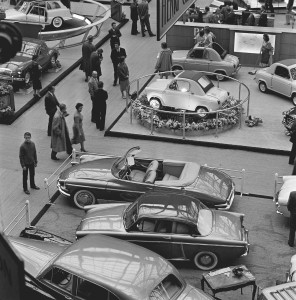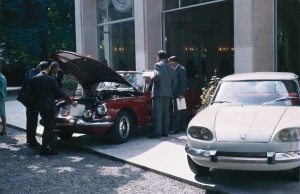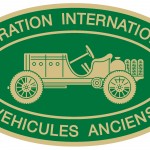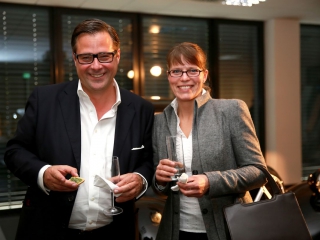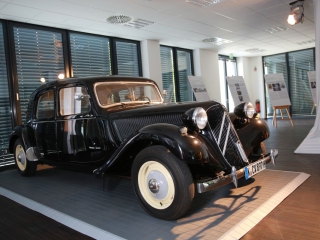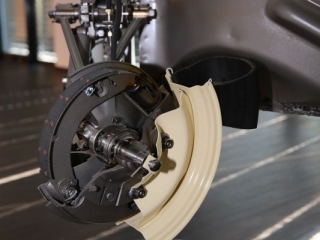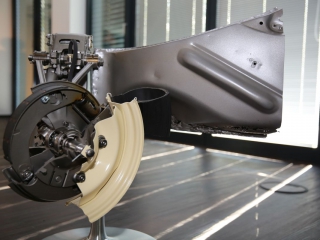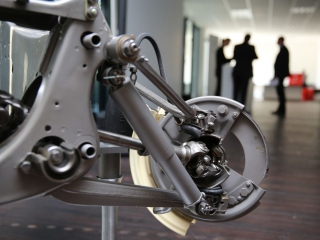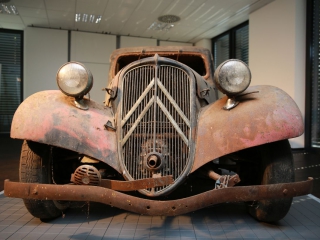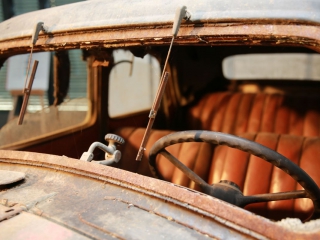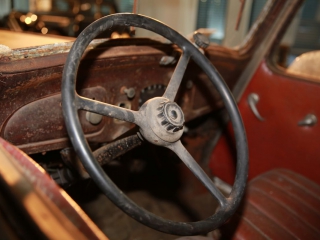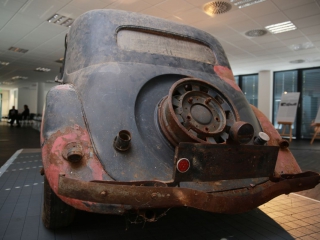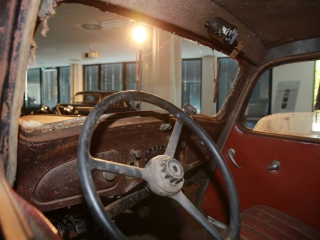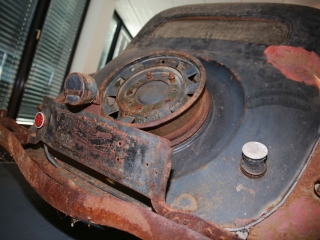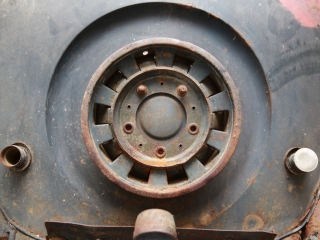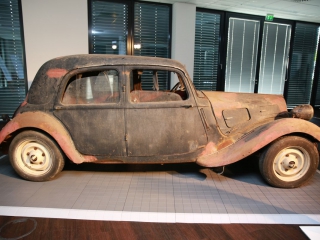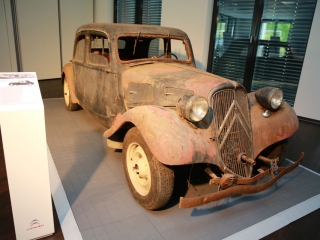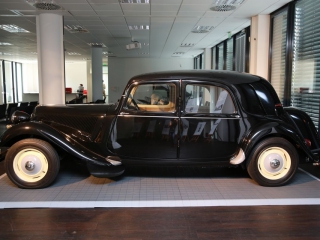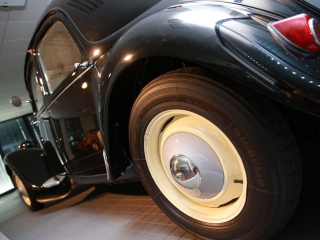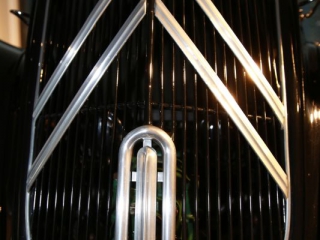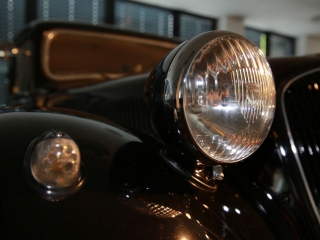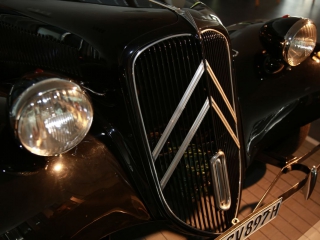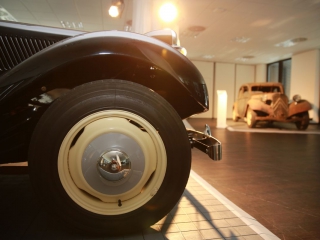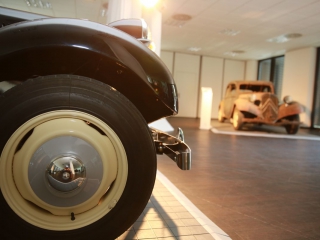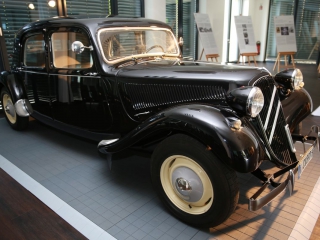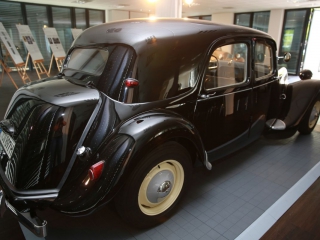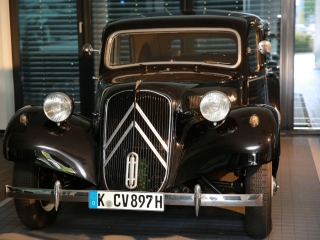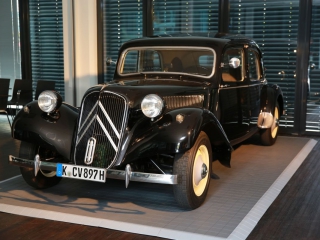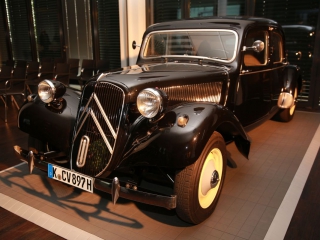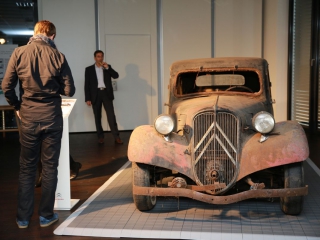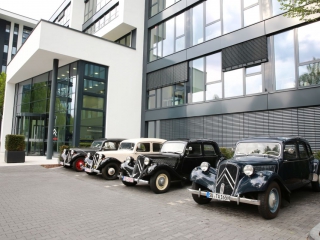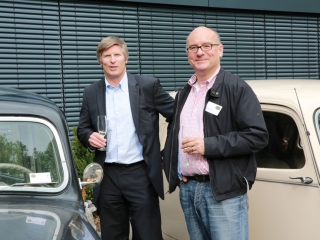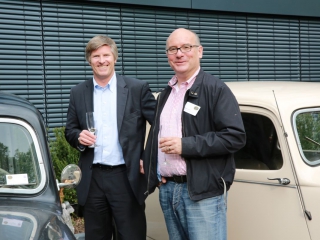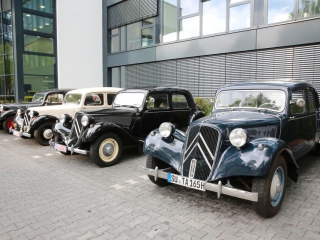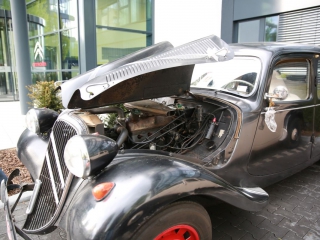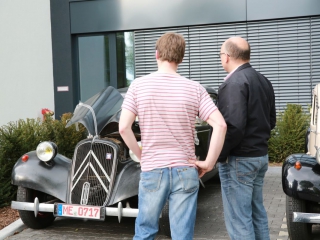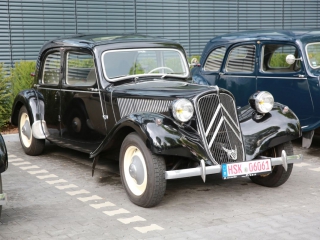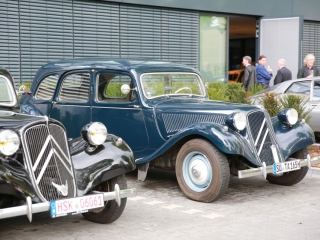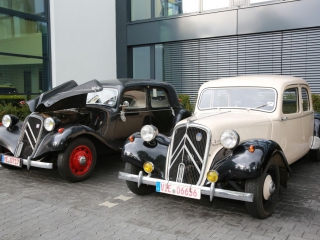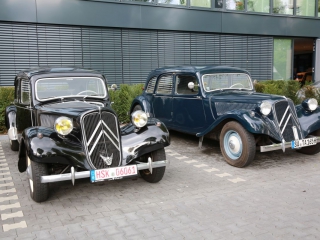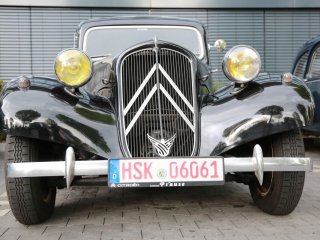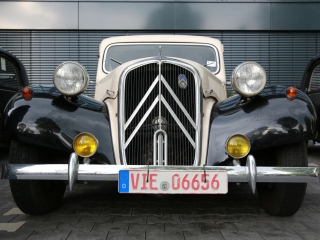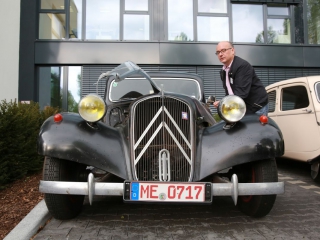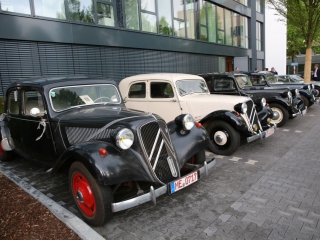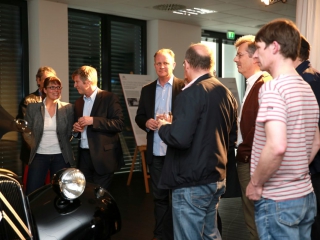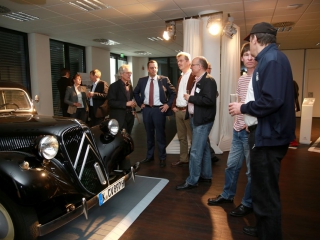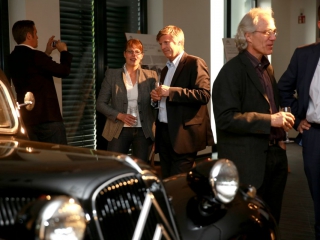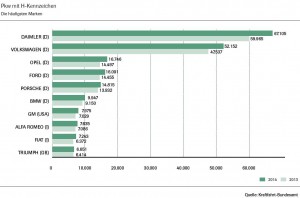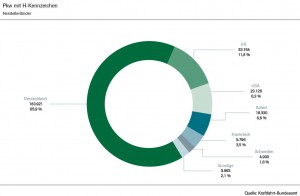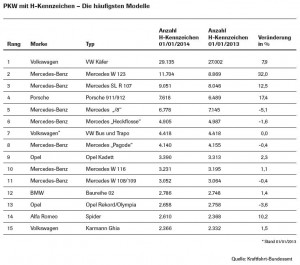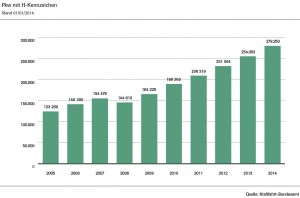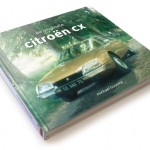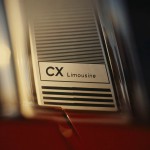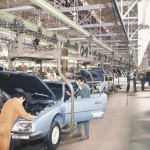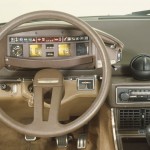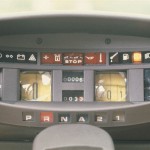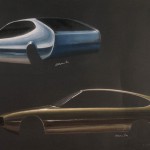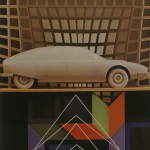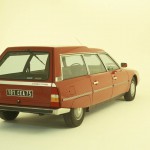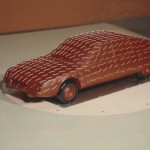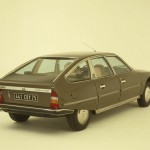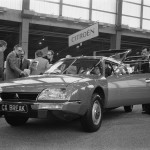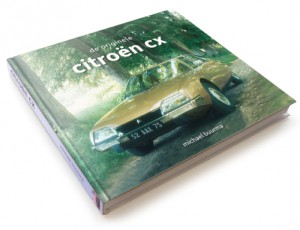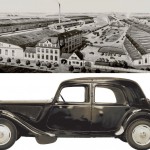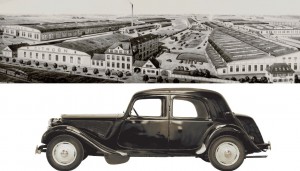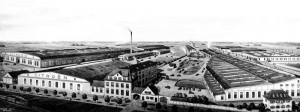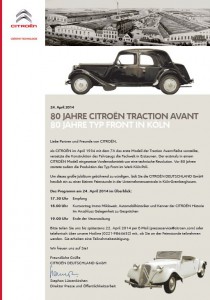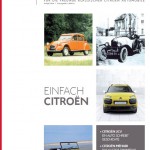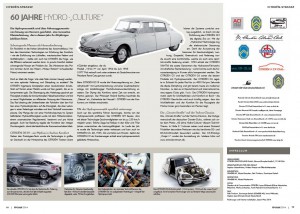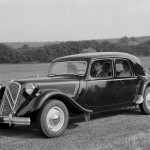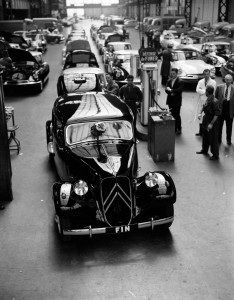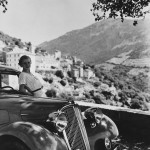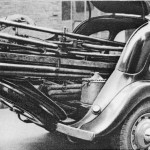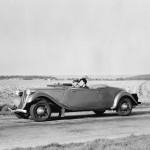
(English below)
Vor 25 Jahren, am 23. Mai 1989, schrieb Citroën mit der Vorstellung des Citroën XM Geschichte und erfüllte seinerzeit den Wunsch der Öffentlichkeit nach einem Oberklassemodell. Das neue Spitzenmodell führte eine neue, mit Elektronik angereicherte Generation des hydraulischen Fahrwerks ein: das Hydractive-Fahrwerk. Durch die Kombination von höchstem Fahrkomfort und aktiver Sicherheit setzte der Citroën XM einen starken Akzent im Oberklasse-Markt.
Hydractive-Fahrwerk
Erstmals weltweit wurden beim Citroën XM, der im September 1989 auf der Internationalen Automobil-Ausstellung in Frankfurt seinen ersten großen Auftritt hatte, das Fahrwerk eines Serienfahrzeugs, die Intelligenz der Elektronik und die Flexibilität der Hydraulik zusammengeführt: Das Hydractive-Fahrwerk, eine Weiterentwicklung der unter anderem von der Citroën DS und vom Vorgänger Citroën CX bekannten Hydropneumatik, war geboren. Bei dem Hydractive-Fahrwerk wurde erstmals eine variable Federung mit elektronisch kontrollierter, veränderbarer Feder- und Dämpfungsabstimmung realisiert. Fünf Sensorensysteme – an Lenkung, Gas, Bremse, Geschwindigkeit und Karosserieneigung – wurden mit der Hydropneumatik kombiniert und ermittelten binnen einer tausendstel Sekunde die optimale Federungseinstellung (komfortabel weich oder sportlich straff).
Auszeichnungen
Schon kurz nach seiner Präsentation wurde der Citroën XM mit Preisen ausgezeichnet – so wurde er zum „Auto des Jahres 1990“ gewählt und konnte darüber hinaus insgesamt vierzehn nationale und internationale Preise gewinnen.
Fahrzeugversionen und Umbauten
Von Mai 1989 bis Juli 1994 wurde die erste Serie (Y3) des von Bertone entworfenen Citroën XM produziert. Die von August 1994 bis Juni 2000 produzierte zweite Serie (Y4) unterschied sich äußerlich durch das mittig angebrachte Markenemblem sowie einen geänderten Heckspoiler.
Werksseitig gab es den Citroën XM zunächst nur als Schräghecklimousine. Ab November 1991 ergänzte die Kombiversion XM Break mit ungewöhnlich großem Stauraum das Angebot. Auch kamen die Sonderserien Onyx (1993), Prestige (1994) und Harmonie (1996) auf den Markt. Die luxuriösen Versionen „Pallas“ (1993) und „Exclusive“ – letztere unter anderem mit Lederpolster, afrikanischem Rosenholz, und vollautomatischer Klimaanlage – ergänzten das Angebot.
Für Umbauten bot sich der Citroën XM ebenfalls an: So baute Heuliez den Citroën XM Break zum Krankenwagen um; Rappold in Wülfrath ermöglichte seinen Einsatz als Bestattungswagen.
Der Citroën XM in der Kunst
Mit seiner Markteinführung wurde der Citroën XM auch zum Kunstgegenstand. In der Ausstellung XM’Art wurde eine Auswahl zeitgenössischer Darstellungen des Automobils und insbesondere des neuen Spitzenmodells von Citroën präsentiert. Die im Mai 1989 in Paris eröffnete Ausstellung wanderte anschließend durch ganz Europa.
Der Citroën XM als Staatskarosse
Beliebt war der Citroën XM auch bei den französischen Präsidenten. François Mitterand setzte auf den Citroën XM ebenso wie sein Nachfolger Jacques Chirac.
In Deutschland finden sich Fans und Freunde des XM in der gleichnamigen Interessengemeinschaft (www.xm-ig.de) zusammen.
Soweit die Pressemitteilung der Citroën Deutschland GmbH, die hier zum Download bereitsteht.
—–
The Anniversary of Today: 25 Years of Citroën XM
In cooperation with Amicale Citroën Deutschland, the German subsidiary of the manufacturer (Citroën Deutschland GmbH) has issued a press release today related to this “modern classic”:
25 years ago, on May 23 1989, Citroën wrote history with the launch of the Citroën XM and fulfilled at the time the public’s desire for a high end model. The new top model introduced a new generation of the hydropneumatic suspension, enriched with electronic components: the Hydractive suspension. By combining the highest level of ride comfort and active safety, the Citroën XM put a strong accent in the luxury market.
Hydractive suspension
The Citroën XM, which had his first major appearance in September 1989 at the International Motor Show in Frankfurt/Germany, as a world’s first Citroën introduced the merger of several components: the chassis of a conventional production vehicle, the intelligence of electronic management and the flexibility of the hydraulic suspension: The Hydractive suspension was born, an evolution of well-known hydropneumatics technology introduced with the Citroën DS and known from the XM’s precedessor, the Citroën CX. With the Hydractive suspension, for the first time a variable suspension with electronically controlled, variable spring and damping coordination was realized. Five sensors systems – the steering wheel, accelerator, brake, speed and body roll – are combined with the hydropneumatics and determined an optimal suspension setting within a thousandth of a second (soft comfortable or sporty and firm mode).
Awards
Shortly after his presentation of the Citroën XM has received numerous prestigious recognitions – it was elected as “Car of the Year 1990” and was also able to win a total of fourteen national and international awards.
Vehicle versions and Conversions
From May 1989 to July 1994, the first Citroën XM series (Y3) waas produced, designed by Bertone . The second generation series (Y4), produced from August 1994 to June 2000, differed externally by the centrally mounted badge, and a revised rear spoiler.
Initially there the Citroën XM was only launched as a hatchback. As of November 1991, the station wagon version “XM Break” supplemented with unusually large storage space was complementing the offer. The special series “Onyx” (1993), “Prestige” ( 1994) and “Harmony” (1996) came to the market. The luxurious versions “Pallas” (1993) and “Exclusive” – the latter , among other things with leather upholstery, African rosewood, and fully automatic air conditioning – completed the offer.
The Citroën XM was also subject to several conversions: amongst them, Heuliez built the Citroën XM Break Ambulance; and the German coachbuilder Rappold in Wülfrath (near Dusseldorf) allowed its use as a hearse.
The Citroën XM in arts
With its launch, the Citroën XM also became the object of art. In the exhibition “XM’Art” a selection of contemporary representations of the automobile, and in particular the new top model of Citroën was presented. The exhibition opened in May 1989 in Paris and then traveled throughout Europe.
The Citroën XM as a Presidential Limousine
The Citroen XM gained additional popularity was with the French president. François Mitterand sat on the Citroën XM , as well as his successor Jacques Chirac.
The Citroën XM – a modern classic
In Germany, fans and friends of the XM are joined in a dedicated club (XM Interessengemeinschaft, XM-IG, www.xm-ig.de).
We’d like to thank Citroën for this publication of another icon and design landmark of the unique history of the manufacturer, and also the connection to the German XM club.
Download the Citroën XM 25th anniversary press release of Citroën Deutschland GmbH.
Have a look and watch out for the model on the street today – and remember another historic moment of automotive history! 🙂
